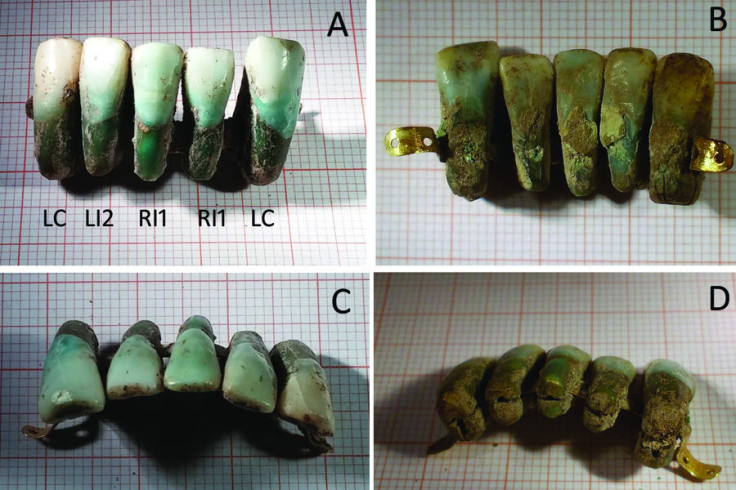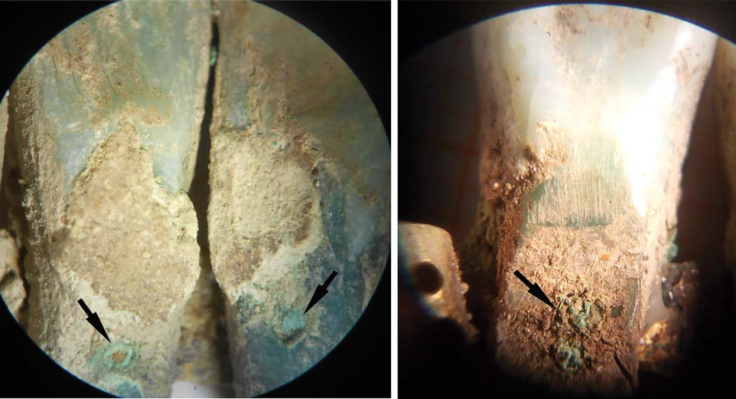Earliest dental prosthesis made of human teeth discovered in medieval tomb
The device provides the first archaeological evidence of a dental prosthesis in the modern period.

Archaeologists have found the earliest dental prosthesis in Tuscany, in the collective tomb of an aristocratic family from the late Middle Ages. The denture is made of five human teeth linked together by a golden band inserted into the dental roots.
The prosthesis was found during excavations in 2010 inside the S. Francesco Monastery at the town of Lucca, among human remains. The family buried there, the Guinigi, governed the city between 1392 and 1429. Their bodies were buried together in two large stone tombs in their private chapel, and over the years, their skeletal remains accumulated.
When the exploration of their tombs took place, the researchers were surprised to find the dental appliance with the skeletons. While some historical sources had described the gold band technology for the replacement of missing teeth in medieval times, none of these devices had been unearthed to date.
The find constitutes the earliest evidence of the use of dental prosthesis in this historical period and offers a unique insight into the advanced dentistry techniques at the time.
Dating and describing the prosthesis
In their paper, published in Clinical Implant Dentistry and Related Research, the archaeologists led by Simona Minozzi from the University of Pisa describe the device in great details. Although they are unable to date it precisely due to its advanced state of deterioration, it seems it was created after the Guinigi family governed Lucca.
Although it was found in the oldest layers of the tomb, dating back to the early years of its utilisation
at the end of 14th century, it was also discovered alongside pottery fragments and devotional
medals dated to the beginning of the 17th century. The hypothesis is that is may have slid down from the upper layers of the tomb.
The prosthesis is composed of five teeth linked together by the golden band to replace the anterior
arch of the jaw. The five teeth include from right to left the right canine, the left second incisor, two right central incisors, and the left canine. The surprising element there is that the correct anatomical sequence is not respected. A closer analysis of the teeth used to create the prosthesis also revealed that they had belonged to different individuals.

"Dentistry has evolved over time from a rather barbaric practice to a technologically advanced industry, and even early civilisations recognised the benefits of tooth replacement with different kinds of appliances (...) The dental prosthesis found in the multiple tomb of the Guinigi family provides the first archaeological evidence of a dental prosthesis in this period," the authors conclude.
© Copyright IBTimes 2025. All rights reserved.






















